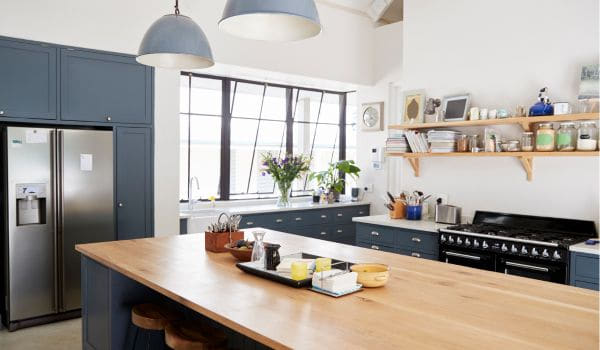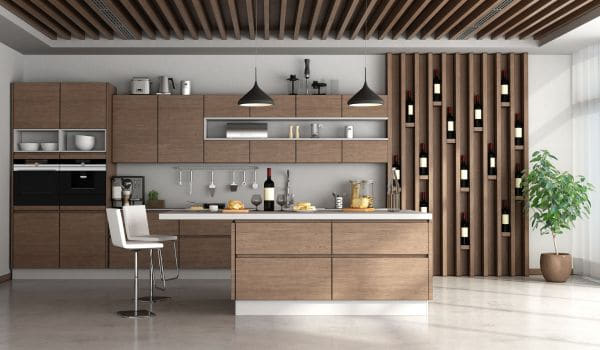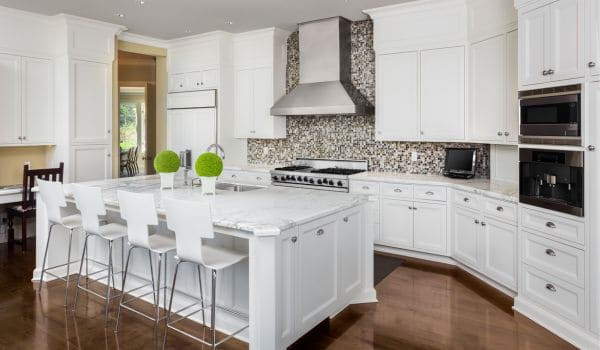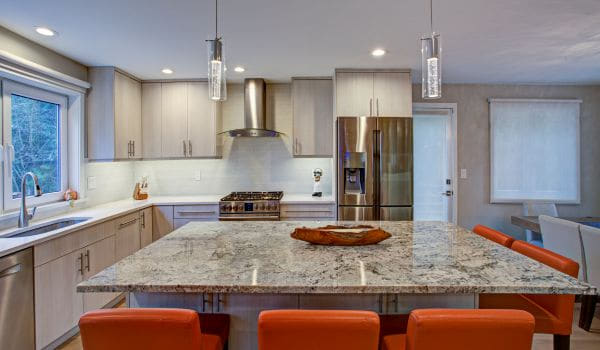A kitchen island stands as a multifunctional centerpiece, merging style with practicality in the heart of your home. Not merely a statement piece, it offers additional counter space, storage solutions, and the potential for extra seating. The cost of a kitchen island varies widely, influenced by factors such as size, material quality, design complexity, and whether it’s custom-made or pre-built.
While a basic island may be quite affordable, a high-end, bespoke design with premium materials and integrated appliances can be a significant investment. Understanding the various price points and what influences them is crucial in making an informed decision that aligns with both your culinary needs and your budget.
Factors Influencing the Cost

Size and Dimensions
The size and dimensions of a kitchen island play a pivotal role in determining its cost. Larger islands with expansive countertops and additional features generally incur higher expenses compared to their smaller counterparts. Custom dimensions, tailored to fit specific kitchen layouts, often involve additional costs compared to standard sizes due to the personalized design and manufacturing process.
Small vs. Large Kitchen Islands
Small kitchen islands, with compact designs and limited features, are generally more budget-friendly. Large kitchen islands, offering ample workspace and additional functionalities, tend to be on the higher end of the cost spectrum.
Custom Dimensions vs. Standard Sizes:
Custom-designed islands, tailored to fit unique kitchen spaces, may incur higher costs due to the individualized production process. Standard-sized islands, mass-produced and readily available, are often more cost-effective but may limit design flexibility.
Material
The choice of materials significantly influences the cost of a kitchen island. Various materials, ranging from wood to granite, marble, and stainless steel, come with different price points. Additionally, considerations of material quality and durability contribute to overall costs.
Types of Materials
Wood, known for its warmth and versatility, comes in different species with varying price ranges. Granite and marble, prized for their elegance, can be more expensive options. Stainless steel, offering a sleek and modern aesthetic, may have a higher initial cost.
Quality and Durability Considerations
Higher quality materials often come with a higher price tag but may provide increased durability and longevity. Factors such as stain resistance, maintenance requirements, and resilience to wear and tear can impact the overall cost of the kitchen island.
Design and Style
The design and style of a kitchen island contribute to its cost, with more intricate and feature-rich designs generally commanding a higher price. Additional features like storage solutions and seating arrangements add to the overall expenses.
Basic vs. Intricate Designs
Basic, minimalist designs are usually more cost-effective, emphasizing simplicity and functionality. Intricate designs, incorporating unique shapes, decorative elements, and architectural details, may involve higher manufacturing and labor costs.
Additional Features
Kitchen islands with built-in storage options or seating arrangements often come at a higher cost due to the added components and customization. Features such as built-in appliances, specialized storage compartments, or integrated seating contribute to the overall style and functionality but may increase the final price.
Cost Breakdown of Kitchen Islands

Kitchen islands serve as central hubs in modern kitchens, offering a blend of functionality and aesthetic appeal. However, understanding the factors influencing their costs is essential for making informed purchasing decisions. Let’s delve into a comprehensive breakdown of the costs associated with kitchen islands.
Material Costs
One of the primary contributors to the overall cost of a kitchen island is the choice of materials. The market offers a range of options, each with its own price point. Wood, known for its warmth and versatility, may come at a more affordable price, while granite and marble, with their elegance, tend to be pricier. Stainless steel, offering a sleek and modern aesthetic, may have a higher initial cost. Understanding the average prices for these common materials and variations based on quality is crucial for budget planning.
Quality plays a significant role in determining material costs. Higher quality materials often come with a higher price tag but may provide increased durability and longevity. Factors such as grade, finish, and origin can influence the overall cost of the kitchen island, making it imperative for buyers to balance their preferences with their budget constraints.
Installation Costs
The installation process is another key factor influencing the overall cost of a kitchen island. Homeowners face the decision of whether to embark on a do-it-yourself (DIY) installation or hire professionals for the job. DIY installations may offer cost savings, but they require a certain level of skill and time commitment. On the other hand, professional installations come with labor costs that vary based on factors such as complexity, customization, and the time required for completion.
Considering the intricacies involved in the installation process, homeowners must weigh the potential savings of a DIY approach against the convenience and expertise offered by professional installers. A well-executed installation ensures the longevity and functionality of the kitchen island.
Additional Expenses
Beyond the core components, additional expenses can significantly impact the overall cost of a kitchen island. Accessories and add-ons, such as sinks, electrical outlets, or specialized storage solutions, contribute to the final expense. Homeowners should factor in these elements when budgeting for their kitchen island project.
Maintenance costs are another consideration. Different materials have varying maintenance requirements, and understanding these needs helps homeowners anticipate ongoing expenses. Regular cleaning, repairs, and upkeep should be factored into the long-term cost of ownership.
Average Cost Ranges

Understanding the average cost ranges for kitchen islands across different tiers is crucial for buyers with diverse budget constraints and preferences.
Low-End Kitchen Islands
Budget-friendly options exist for those looking to keep costs down. These islands may feature basic designs and materials, providing practicality without sacrificing functionality. However, buyers should be prepared for potential trade-offs in terms of quality or additional features.
Mid-Range Kitchen Islands
In the mid-range, homeowners can expect a broader selection of materials and designs. Common materials in this price range strike a balance between affordability and quality. Buyers can explore options that cater to their specific needs without compromising on style.
High-End Kitchen Islands
Premium materials and custom designs characterize high-end kitchen islands. The cost in this segment is elevated due to the luxurious features and unique, personalized elements. Homeowners with a penchant for top-tier quality and customization will find a range of options to suit their preferences.
Tips for Cost Savings

When considering the installation of a kitchen island, cost-conscious homeowners can explore various strategies to optimize their budget without compromising on quality or functionality. Here are key tips for cost savings:
Comparison Shopping for Materials
One effective approach to manage costs is thorough comparison shopping for materials. By exploring different suppliers, brands, and material options, homeowners can identify affordable alternatives without sacrificing quality. Prices for materials can vary, and a well-researched selection ensures that buyers get the best value for their investment. Additionally, considering the durability and maintenance requirements of materials can contribute to long-term savings by reducing the need for frequent replacements or repairs.
DIY Installation Considerations
Opting for a do-it-yourself (DIY) installation can significantly reduce labor costs associated with hiring professionals. However, this approach requires a certain level of skill and understanding of the installation process. Homeowners should assess their capabilities and be realistic about the complexity of the project. DIY-friendly kitchen island kits or pre-cut materials can simplify the process for those with moderate skills, providing a cost-effective alternative to professional installation. Clear instructions and online tutorials can serve as valuable resources for DIY enthusiasts.
Exploring Pre-Assembled or Ready-to-Assemble Options
To streamline the installation process and potentially reduce costs, homeowners can explore pre-assembled or ready-to-assemble (RTA) kitchen island options. Pre-assembled islands arrive at the site in one piece, minimizing the need for extensive assembly. RTA options, on the other hand, offer a middle ground by providing components that homeowners can easily assemble themselves. Both choices often come with cost advantages, as they may require less labor and time compared to custom-built options. This approach is particularly suitable for those seeking a balance between affordability and customization.
Negotiating with Contractors for Installation Costs
For those opting for professional installation, negotiating with contractors can be a valuable strategy to control costs. Seeking multiple quotes from different contractors allows homeowners to compare prices and negotiate for a more favorable deal. Contractors may be willing to adjust their pricing based on factors such as project complexity, timeline flexibility, or bundled services. Open communication and a willingness to discuss budget constraints can lead to a mutually beneficial agreement.
Conclusion
Achieving a cost-effective kitchen island installation involves a combination of informed decision-making and strategic choices. Comparison shopping for materials, considering DIY options, exploring pre-assembled or RTA choices, and negotiating with contractors are all viable strategies to optimize costs. Homeowners should strike a balance between their budget constraints and the desired features, ensuring that the chosen approach aligns with their preferences and practical needs. Ultimately, a well-thought-out and cost-conscious approach to installing a kitchen island can result in a functional and aesthetically pleasing addition to the home, enhancing the overall kitchen experience without breaking the bank.





